
Studies on Compatibility Between Ultra-Wideband (UWB) Wireless System and Existing Wireless Systems
Microwave Electromagnetic Environment Measurement System
To prevent interference between wireless communication systems that make use of the microwave band - such as UWB systems and wireless local-area networks (LANs) - it is necessary to track the frequency and intensity of the communication wave and background electromagnetic noise, as well as the position and direction of emissions. The present instrument measures the radio field intensity and spectrum and displays the results in a 2-D plot, enabling viewing of the radio signals in graph format.
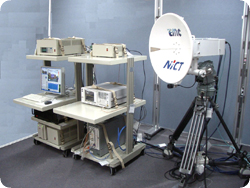
External view of microwave electromagnetic environment measurement system
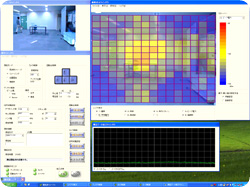
Effects of power density distribution measurement on DS-UWB transmitter (no partition in front of transmitter)
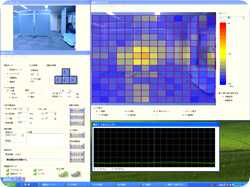
Effects of power density distribution measurement on DS-UWB transmitter (with partition in front of transmitter)
Reproduction of Waveform for Field Strength of Disturbance from UWB Transmitters
It is important that we should observe not only the spectrum of an UWB system but also the electric-field waveforms of the system in order to grasp the mechanism of electromagnetic interferences by the UWB system. Though an oscilloscope is used for the observation of waveforms, the obtained waveforms contain the characteristics of a measurement systems. Therefore, we developed a reconstruction method of the electric-field waveform, in which the characteristics of the measurement system including the antenna factor were removed.
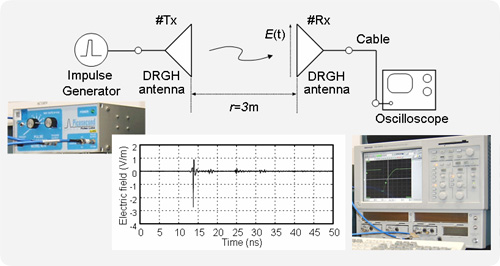
Results of waveform reproduction for the impulse radio UWB disturbance field
Peak power within the 50-MHz bandwidth specified in the FCC rule can be measured by a method where the electric-field waveform is reconstructed from an output of an oscilloscope. This is done by multiplying the readings of the oscilloscope in frequency domain by a function corresponding to the response characteristics of the intermediate frequency filter of the spectrum analyzer, enabling calculation of peak power for a restricted band within a given bandwidth. Since spectrum analyzers with 50-MHz resolution bandwidth are presently rare, the current method may offer an extremely effective alternative.

Results of peak power calculation using the present method (calculated) and results of measurement using a spectrum analyzer (measured)
These methods have been submitted as a proposal to task group TG1/8 of the Radio Communication Section of the International Telecommunications Union (ITU-R), and have ultimately been included in recommendations for UWB measurement techniques (SM.1754: "Measurement techniques of ultra-wideband transmissions").
Evaluation of EMI on Wireless LAN by UWB Wireless systems using GTEM Cells
When electromagnetic interference (EMI) occurs between wireless systems, evaluation of interference is normally performed by physically connecting the two instruments. However, since most wireless LAN devices today are either installed inside a laptop or incorporated in card form, transmission antennas are generally embedded within the wireless LAN device; connections thus cannot be established to evaluate interference. Given these restrictions, the EMC Group is currently investigating a method of evaluating interference using a Gigahertz Transverse Electro-Magnetic (GTEM) cell, which allows for convenient generation of the stipulated electric fields inside the equipment.
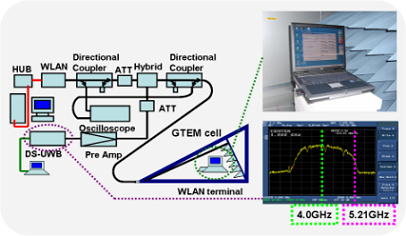
Test systems for IEEE802.11a and DS-UWB
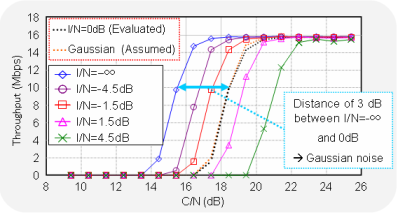
Example interference test results